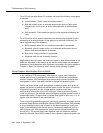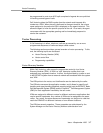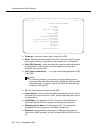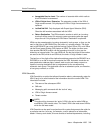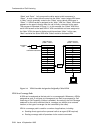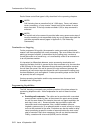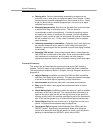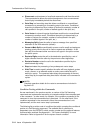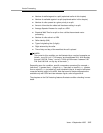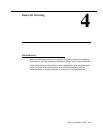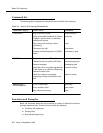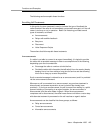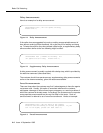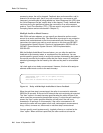
Fundamentals of Call Vectoring
3-14 Issue 4 September 1995
■ Disconnect ends treatment of a call and removes the call from the switch.
The command also allows the optional assignment of an announcement
that will play immediately before the disconnect.
■ Goto Step is a branching step that allows conditional or unconditional
movement to a preceding or succeeding step in the vector. Conditional
branching is determined by a number of factors (for example, number of
calls queued in the split, number of staffed agents in the split, etc.).
■ Goto Vector is a branching step that allows conditional or unconditional
movement to another vector. Conditional branching is determined by a
number of factors (for example, number of calls queued in the split,
number of staffed agents in the split, etc.).
■ Messaging Split allows the caller to leave a message for a specified
extension or the VDN extension (default).
■ Queue-to Main Split unconditionally queues a call to a split and assigns a
queuing priority level to the call in case no agents are available. A call
sent with this command either connects to an agent in the split or enters
the split’s queue.
■ Route-to Digits routes the call to the destination specified by a set of
digits collected from the caller by the previous
collect digits
step.
■ Route-to Number routes the call to the destination specified by the
administered digit string.
■ Stop terminates the processing of any subsequent vector steps.
■ Wait-Time is used to specify whether the caller will hear ringback, system
music, silence, or an alternate audio or music source while the call is
waiting in queue. The command also delays the processing of the next
vector step by the specified delay time that is included in the command’s
syntax.
NOTE:
Complete operation details for the
route-to
commands are included in
Appendix G.
Condition Testing within the Commands
As was mentioned in the previous section, a number of the Call Vectoring
commands are implemented according to a tested condition that comprises part
of the command. In other words, for example, if the condition expressed in the
command is
true
, the command action is executed. On the other hand, if the
condition expressed in the command is
false
, the command action is
not
implemented, and the next vector step is processed.
The following list provides a set of conditions that might comprise the conditional
portion of a Call Vectoring command. The available set of conditions is
dependent upon the DEFINITY switch version number and the optional features
that have been enabled. See Appendix L, "V4 Feature Availability" for more
information. Refer to Appendix A for the syntax of each condition.



